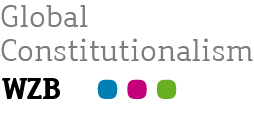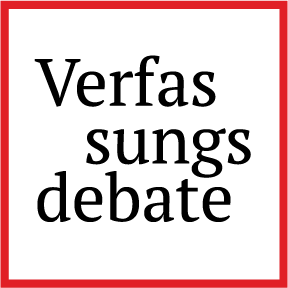Against Abusive Essentialism
Reflections on Multi-Institutional Abusive Feminism From South Asia
Dixon identifies two means of abusive feminism – formalism and descriptive representation – both of which have found currency in the South Asian context.1)
The South Asian region has a long history of female leaders of states. Indira Gandhi in India, Benazir Bhutto in Pakistan, Shaikh Hasina in Bangladesh, and Sirimavo Bandaranaike in Sri Lanka were some of the earliest women leaders of the world. South Asia gave the world its first women leaders, but their rule demonstrates that no easy causations can be drawn between descriptive presence of women in positions of power and democracy. The experience of gender justice and constitutionalism with these women leaders warns us against making essentialist arguments about women’s political leadership. Women can be and are good and bad leaders just as men. Descriptive representation by its very nature is a red herring. The framework of abusive feminism can help us recognize the dynamic nature of authoritarian rule and take a contextual, multi-institutional, and intersectional approach in our responses.
Women’s descriptive representation in South Asia
There are discernible patterns in the rule of female leaders of South Asia: all of them were from elite backgrounds who achieved the high office through family networks. The legacy of these women leaders is complex, particularly given the otherwise low representation of women in legislative bodies in the region even today.2) Indira Gandhi, while being the first prime minister of India, adopted a strongly authoritarian form of government, ultimately imposing the first emergency in the history of independent India, suspending fundamental rights, and jailing opposition leaders. Shaikh Hasina in Bangladesh was in the seat of Prime Minister for almost twenty years between 1996 and 2001 and subsequently between 2009 and 2024. During her second tenure, she took an increasingly authoritarian turn too, jailing opposition leaders, delegitimizing student protestors, and cracking down on any forms of dissent. Last year she was forced to resign and flee the country. The female leaders in South Asia present a broad spectrum of approaches to democracy. While Bhutto was a democratic reformer, Gandhi and Hasina oscillated between dictatorial and democratic rule.
In our previous joint work, Rosalind Dixon and I have found that uncritical reliance on descriptive representation as an indicator of gender justice is a reductionist approach. We found that for authoritarian leaders, it presents a low-hanging fruit that allows them to claim legitimacy by posturing to the UN, international NGOs, the international media, and think tanks while requiring very little in terms of structural change. In India, for instance, the Modi government has strategically postured itself as a pro-women’s government even while systematically dismantling the institutions of democracy and women’s rights for systemic change. In 2023, the ruling party-led parliament passed the Constitution (One Hundred and Twenty-Eight Amendment) Act, 2023 to reserve one third seats in parliaments and state assemblies for women. This seemingly progressive constitutional amendment came against the backdrop of the Modi government’s attempt at entrenching its power by a delimitation exercise in parliament. The 2023 bill tied reservations for women to the delimitation exercise which would potentially lead to a reduction in parliamentary seats of Southern Indian states where the ruling BJP party does not enjoy much political currency. Such posturing measures often tend to be exclusionary. Thus, while bringing the bill, the ruling party did not consult any women’s organizations and ignored the long-standing demand for reservation of seats for Muslim women who are one of the most marginalized and underrepresented social groups in India.3)
Dynamic dictators
The terminology of abusive feminism allows us to widen the scope of conversation on gender and constitutions beyond text and courts. It helps us recognize that dictators are dynamic people. They adopt to continuity and change for cementing and furthering their power. Thus, we should constantly be observant of broader patterns beyond a particular set of judicial cases. Let me expand further.
Abusive feminism has a discursive dimension. Authoritarian leaders not only intend to weaken democratic institutions by using the language of rights and gender justice, they also intend to weaken the language of rights itself so that it becomes malleable and less of a threat to the status quo. In my doctoral work, I undertook a discursive analysis of the speeches by the leaders of the ruling party in the Indian parliament during the debate on the 2023 constitutional amendment bill and found that ideas of motherhood, the ideal role of women in Indian society, the notions of motherland and her caring daughters occupied the debates. The bill was thus not only a potential attempt to capture the institution of parliament; it was also an attempt to redefine equality in a fashion that fits the ruling party’s ideological apparatus. The 2023 bill confirms the longer history of discursive struggle over constitutional conceptions of equality by authoritarian leaders.4) As Dixon’s piece points out, formal conceptions of equality often find support in authoritarian ideology because it allows the regime to pitch women’s rights against rights of other minorities rather than recognize the complex web of intersectional and multi-sectional disadvantages.5) In my other work on the last ten years of Indian constitutionalism for Verfassungsbook, I find that the formal language of women’s rights has been used by the ruling Hindu nationalist ruling party to overly criminalize Muslim men through implementation of deeply controversial laws on family law reform, without much debate with stakeholders.6)
Branching out
Identifying these patterns of abuse requires us to expand our institutional focus to include all branches of state – in particular courts and legislative bodies.7) For instance, the warnings against descriptive representation are often also applicable to judicial benches. Analyzing the Sri Lankan judiciary’s record on equality and non-discrimination, Dinesha Samararatne warns us that the connection between women judges and gender justice is “tenuous”. Merely the presence of women judges on the bench does not guarantee a gender-progressive turn in the jurisprudence and practices of a country.8) Samararatne suggests that instead of focusing on women’s descriptive representation on bench, one should ask about the “laws, legal institutions and the legal and political culture within which they (women judges) operate”.
The lessons from Samararatne’s examples are equally applicable to judicial institutions in the region.9) All existing South Asian constitutions provide for (a) non-discrimination based on gender and/or sex, and (b) special policy and legal measures for women, and (c) in some cases affirmative action and reservations for women.10) However, the judicial discourse on these guarantees across these jurisdictions has been rather ad hoc, heavily dependent on the formation of benches rather than a sustained gender-sensitive jurisprudence.11)
Such multi-institutional approaches are apt for South Asian constitutions which not only provide for judicially enforceable constitutional rights but also include explicitly targeted directives for the executive and legislature.12) Thus, for instance, part 4 of the Constitution of Nepal provides for directive principles, policies and obligations of state which require the state to take measures for material equality and inclusion, amongst other things. These are not judicially enforceable but require the government of Nepal to submit an annual report to parliament on the actions taken in furtherance of these directive principles.13) A parliamentary committee is required to monitor state’s progress on these directives.14) Similar provisions can be found in the constitutions of India, Pakistan, Sri Lanka, and Bangladesh.15)
Conclusion
Women have long existed in right-wing spaces as voters, and even active militant organizers.16) The framework of abusive feminism can help us distinguish between difference, disagreement, and abuse. The context sensitivity and multi-institutionality of the concept of abusive feminism can help us identify patterns in authoritarian usages of rights. As Dixon and Landau points out, identifying patterns of abuse is necessary not only to protect against misuse of ideas – but also to protect against hollowing out of the conception itself.17)
References
| ↑1 | South Asia is a contested term, but for the limited purposes of this blog, I am using the term even while accepting its limits. See- Upendra Baxi, ‘Modelling Optimal Constitutional Design’ in Sunil Khilnani, Vikram Raghavan, Arun Thiruvengadam, Comparative Constitutionalism in South Asia (OUP 2013) 24. |
|---|---|
| ↑2 | Mary Fainsod Katzenstein, ‘Towards Equality? Cause and Consequence of the Political Prominence of Women in India’ in Gail Minault (ed), The Extended Family: Women and Political Participation in India and Pakistan (Chanakya Publication 1981) 286; Anand Arora, The Women Elite in India (Sangam Books, 1991). |
| ↑3 | Shirin M. Rai, Carole Spray, Performing Representation: Women Members in the Indian Parliament (OUP 2018) 131. |
| ↑4 | Ratna Kapur, Brenda Cossman, Subversive Sites: Feminist Engagements with Law in India (Sage 1996) 232. |
| ↑5 | Flavia Agnes, ‘Women’s Movement in Secular Framework: Redefining the Agenda’ (1994) 29(19) EPW 1123. |
| ↑6 | I discuss this in more detail here: Surbhi Karwa, ‘Growing Authoritarianism and Gender Constitutionalism in India, 2014-2024’ in Tanja Herklotz, Anmol Jain (eds), Indian Constitutionalism in the Last Decade (Verfassungsbooks, forthcoming). |
| ↑7 | Silvia Suteu, ‘Women and Participatory Constitution-Making’ in Helen Irving (ed), Constitutions and Gender (Edward Elgar 2017). |
| ↑8 | Dinesha Samararatne, ‘Reframing Feminist Imperatives in Adjudication through a Reading of Sri Lankan Jurisprudence’ in Melissa Crouch (ed), Women and the Judiciary in the Asia Pacific (CUP 2021) 66. |
| ↑9 | See for instance: Surbhi Karwa, ‘Gender and the Constitution’ Cambridge Companion to the Constitution of India (forthcoming). |
| ↑10 | Guarantees of non-discrimination: Article 27-29, Constitution of the People’s Republic of Bangladesh; Article 7(8) 7(11), 7(15), Constitution of the Kingdom of Bhutan, Article 14-16, Constitution of India, Article 18, Constitution of Nepal; Article 25-27, Constitution of the Islamic Republic of Pakistan, Article 12, Constitution of Sri Lanka. Reservations in legislative bodies: Article 65, the Constitution of the People’s Republic of Bangladesh; Article 330A, 332A, the Constitution (One Hundred Twenty-Eighth Amendment) Act, India 2023; Article 84, Constitution of Nepal; Articles 51, 59 and 106, Constitution of the Islamic Republic of Pakistan. |
| ↑11 | See generally: Ruth Rubio Marin et. al., Gender, Sexuality and Constitutionalism in Asia (Hart 2023). |
| ↑12 | Tarunabh Khaitan, ‘Constitutional Directives: Morally-Committed Political Constitutionalism’ (2019) 82(4) MLR 603. |
| ↑13 | Article 53, Constitution of Nepal. |
| ↑14 | Article 54, Constitution of Nepal. |
| ↑15 | Part-2, the Constitution of Bangladesh; Part-4, the Constitution of India; Part 4, the Constitution of Nepal; Chapter-2, the Constitution of Pakistan; Chapter 6, the Constitution of Sri Lanka. |
| ↑16 | Tanika Sarkar, ‘Hindu Women, Mother Goddesses: Family and Organization in Hindutava Politics’ in Tanika Sarkar, Urvashi Butalia, Women and the Hindu Right: A Collection of Essays (Kali 1995) 181. Ratna Kapur, ‘Human Rights in the 21st Century: Take a Walk on the Dark Side’ (2006) 28(4) Syndey Law Review 665. |
| ↑17 | David Landau, Rosalind Dixon, Abusive Constitutional Borrowing: Legal Globalization and the Subversion of Liberal Democracy (OUP 2021). |



